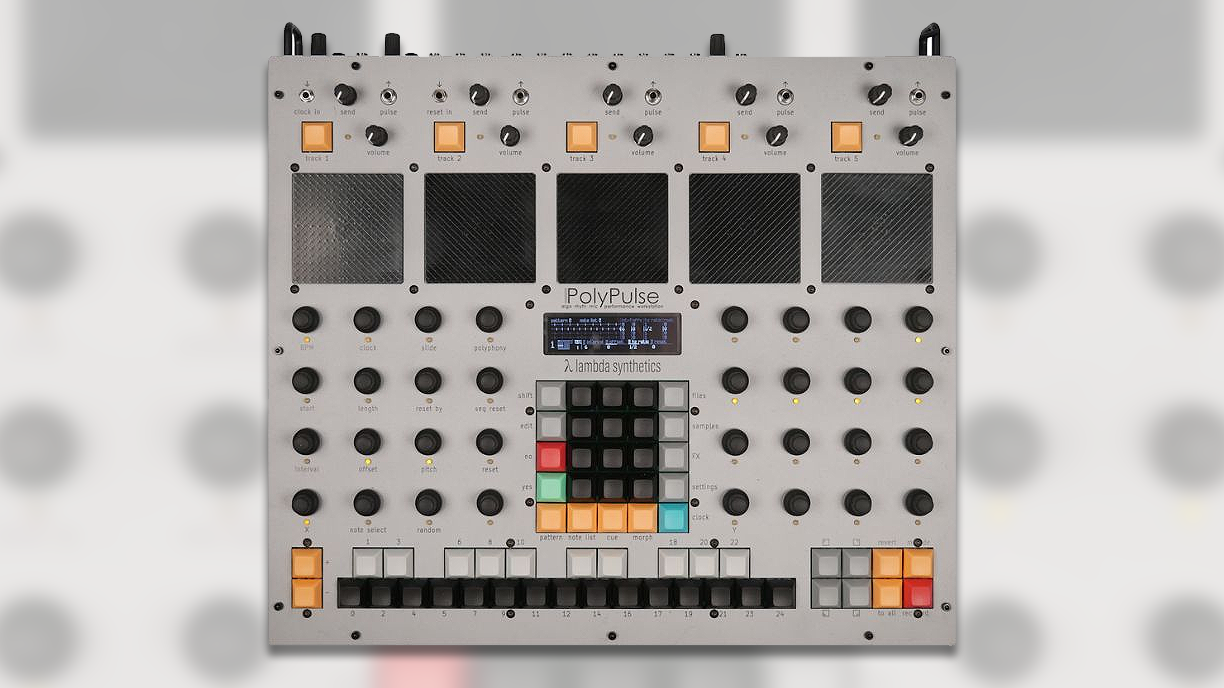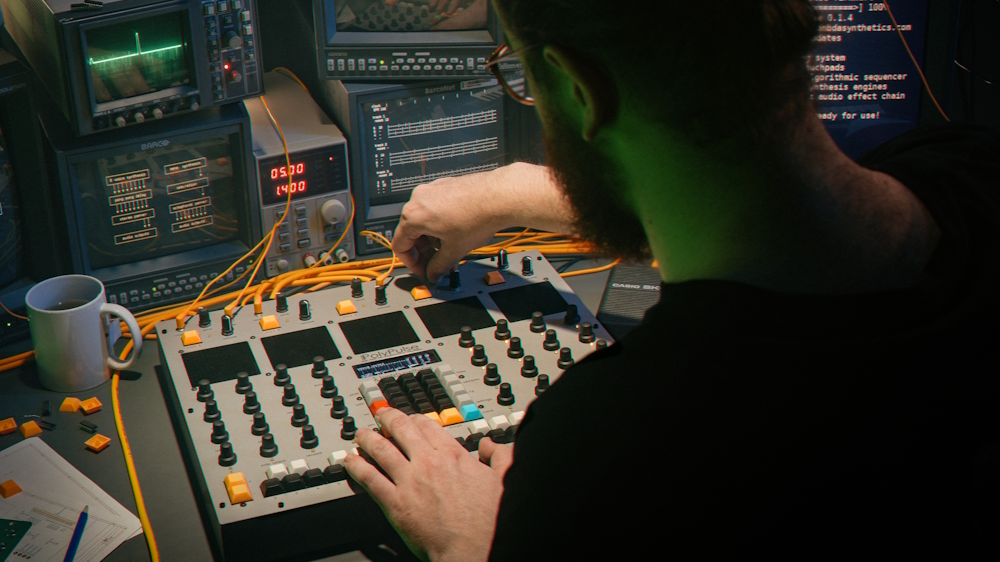It might be a little ugly, but Lambda Synthetics' PolyPulse could be the instrument that finally breaks you out of the 16-step grid
Is that a control panel at a Soviet-era nuclear power plant? No, it's an algorithmic performance workstation

All the way back in 2023, Lambda Synthetics debuted the PolyPulse at the Superbooth trade show, a hefty groovebox and “algorithmic performance workstation” with an even heftier spec sheet and a starkly industrial design that isn’t what we’d call easy on the eyes. (It's giving ‘control panel at a Soviet-era nuclear power plant’.)
PolyPulse was launched on Kickstarter the same year, and 34 backers have since pledged over €50,000 to make the instrument a reality. Two years later, the instrument is now in production and available to order for UK/EU customers at Thomann, or Perfect Circuit if you’re in the US.
Aesthetics aside, PolyPulse looks like it could prove an immensely powerful tool for live electronic performance, thanks to an innovative and unfamiliar approach based around an algorithmic workflow.
The instrument is equipped with five tracks, each with its own algorithmic sequencer, polyphonic sound engine, audio effects chain and dedicated XY touchpad on the interface, which also features 32 encoders, 13 pots and 65 keyboard-style buttons, 25 of which make up a two-octave keyboard, alongside its OLED display.
PolyPulse’s sequencer isn’t your average 16-step affair; unconventionally it treats rhythm and pitch independently. Rhythms are programmed via an algorithmic system with four independent ‘pulses’ on each track, each modified by a number of pattern-shaping parameters that can create complex and evolving polyrhythms.
Pitches are then assigned to these rhythms via a global ‘note list’ shared by all tracks, a sequence of pitches that can be reversed and randomized. Since launching, PolyPulse has been updated with a song mode that allows for the arrangement of patterns via a unique algorithmic cue system.

Each track can hold one of PolyPulse’s five sound engines, which span classic subtractive synthesis, FM, additive, granular and physical modelling; these are joined by a 'quad engine' made up of four configurable slots that can host a number of mini sound engines capable of drum synthesis and stereo sample playback from its 26GB onboard memory.
Want all the hottest music and gear news, reviews, deals, features and more, direct to your inbox? Sign up here.
Sounds can be processed by a comprehensive range of effects that includes compression, reverb, delay, EQ, filter, drive and tape emulation; each track gets four effects slots, and so does the master bus. Modulation comes courtesy of a per-voice modulation system that can assign a multi-waveform LFO, AD envelope, 16-step sequencer or randomizer to any destination across PolyPulse's sound engines, effects and even other modulators.
PolyPulse is well-equipped on the connectivity front and has everything you’d need to incorporate it into a wider set-up: you’ve got a stereo headphone output, four audio inputs, eight audio outputs, 5-pin DIN MIDI in/out and trigger in/out, along with an Ethernet port for updating firmware and uploading samples.
PolyPulse looks like one of the most unique instruments we've come across in a minute. There's tons of potential for creative sound design here and more hands-on control than you could ask for, but the real draw is a refreshingly innovative take on sequencing and arrangement that could open up a whole new world of performative possibilities.
PolyPulse is priced at £1769/$2099. Find out more on Lambda Synthetics' website.

I'm MusicRadar's Tech Editor, working across everything from product news and gear-focused features to artist interviews and tech tutorials. I love electronic music and I'm perpetually fascinated by the tools we use to make it.
You must confirm your public display name before commenting
Please logout and then login again, you will then be prompted to enter your display name.
